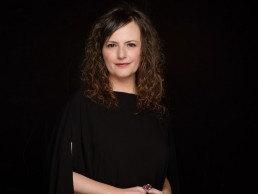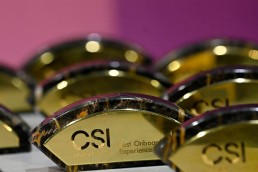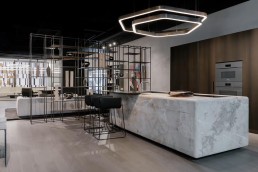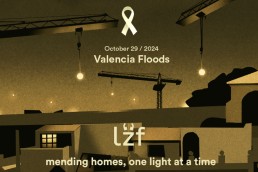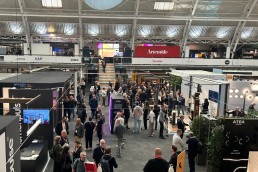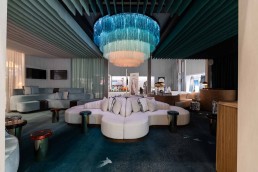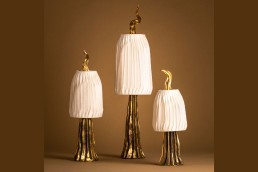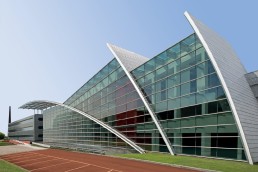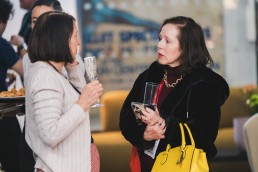New Hospitality Design Director at Bishop Design
(Dubai) – The Dubai based design studio has announced Francesca Patti as Hospitality Design Director.
Patti’s promotion coincides with the studio’s ambitious growth strategy. Recent key appointments, including Kimberly Dean as Associate Director and other key figures, are strengthening the company’s creative capabilities and positioning it for global expansion.
“It is with great pride and excitement that we announce the promotion of Francesca Patti to the role of Hospitality Design Director,” says Mehmet Aktash, Managing Director of Bishop Design. “Patti has become a recognisable and respected figure within the design and hospitality community, celebrated for her passion, resilience, and uncompromising will to achieve the very best. Her work consistently surpasses expectations, embodying the ethos of Bishop Design in every project she undertakes.”
After two years Patti earned recognition for her projects including Duo Gastrobar, collaboration with Russian Chef Dmitry Blinov. The first location, in Dubai Hills in 2023, earned a Michelin Bib Gourmand building on its success. Patti led the design of Duo Gastrobar Dubai Harbour, which debuted in November 2024, featuring refined interiors with warm tones, soft lighting, and subtle blue accents.
Patti says: “I am deeply grateful to Bishop Design for believing in me and providing this incredible opportunity. Being promoted to Hospitality Design Director is a dream come true, and I couldn’t be more excited to embrace this new role.”
She adds: “I am committed to supporting the company’s ambitious growth plans while fostering a positive and collaborative working environment. My focus will be on encouraging our creative teams to enjoy every step of the design process, think boldly, share ideas freely, and contribute to a culture that enhances in-house talent while attracting new, innovative minds. With nearly 20 years of international design experience across Naples, Milan, Chengdu, Shanghai, and Dubai, I am ready to take on this role with enthusiasm and am excited for what lies ahead.”
Maximising Wellbeing in Residential Environments
https://vimeo.com/1034344534
Speaker: Hugo Lindsay-Fynn, Palladian
Home interiors are something of a wellbeing battleground. Electromagnetic frequencies generated by home tech – particularly wireless and Bluetooth – are not conducive to good health.
Sustainable advances, including triple-glazed, energy-saving windows, are in danger of having a negative impact too, cutting out the sun’s most energy-giving lightwaves – and then, there’s the flickering problem that comes with many low-energy LED and fluorescent bulbs.
Ensuring homes have enough light of the right temperature and lux/intensity levels, whilst prioritising health, sustainability and people’s technological needs, is a complex ambition. What is the right pathway through?
Cruise Ship Interiors Awards Announces Winners
(UK) – Coinciding with the Cruise Ship Interiors Expo held at Excel London, CSIA honoured its winners across 11 categories, including Best Refurbishment, Guest Tech Experience of the Year, and Best Dining Space.
Notable winners include MRD Lighting, who earned ‘Guest Tech Experience of the Year’ for their transformative lighting solutions.
The night concluded with a surprise honour for George Scammell, Director of Interior Asset Management at Princess Cruises, who received the ‘Legend of Design Award’ for his mentorship and impact on the industry.
The awards ceremony opened with a drinks reception where Elite Exhibitions CEO, Toby Walters, led the celebration, extending thanks to sponsors Kalmar Lighting and Laticrete.
Full list of winners:
Best Dining Space
Irth, Cruise Saudi, Aroya Cruises, SMC Design
Best Suite, sponsored by Bath Fitter
Studio DADO and Fincantieri for Regent Suite, Regent Seven Seas
Best Stateroom, sponsored by Ball & Young
SMC Design and Meyer Werft, Balcony Cabin, NYK Cruises Asuka III
Best Public Space, sponsored by Varuna Cruise Engineering Powered by STIM Tech Group
Tillberg Design of Sweden, for Sanctuary onboard Sun Princess, Princess Cruises
Best Onboard Experience, sponsored by JSN United
Royal Caribbean, Wilson Butler Architects and Breakfast, NY, for The Pearl, Icon of the Seas, Royal Caribbean
Best Dining Space, sponsored by Lavagnoli
SMC Design and MJM Marine for Irth, Aroya Cruises
www.cruiseshipinteriors-europe.com
Artemide and Henge open new showrooms in Miami
(USA) – Two renowned Italian lighting brand announce the opening of its new showrooms, timed to coincide with Design Miami.
Located in the Miami Design District, Artemide’s showroom will serve as a destination for architects, interior designers, lighting professionals, and design enthusiasts. Providing an immersive experience, showcasing lighting solutions created by designers and architects, including BIG, Foster + Partners, Herzog & de Meuron, Neri&Hu, Jean Nouvel, Gensler, Mario Cucinella, and Carlo Colombo, among others.
Henge opens its showroom in the Design District with a 350sqm space. The showroom is conceived as a true "design atelier," offering architects, designers, and design enthusiasts Henge lighting. Highlights from the collections on display include Oneon, a kitchen designed by Massimo Castagna; the Floyds Lights collection, created in collaboration with Venini and designed by Ugo Cacciatori; Spyder X, an evolution of the iconic Spyder by Massimo Castagna; the He-She side tables, designed by Ugo Cacciatori.
Artemide’s Miami showroom is located at 4141 NE 2nd Avenue, Unit 105 D/F, Miami, FL 33137 and is by appointment only.
Henge Miami showroom is located at 4141 NE 2ND Avenue S.99 Miami, Florida 33137.
LZF affected by severe floods
(Spain) – Recent severe flooding in Valencia region impacts local lighting brand, LZF.
Spain has suffered extreme weather in recent months, which has impacted numerous homes and businesses. In an effort to support its local community, and in turn its employees, LZF is running a discount campaign on a selection of its products.
“While LZF was fortunate to avoid significant damage, the flooding has profoundly affected our community, employees, and suppliers,” explains the brand.
“We are making steady progress with clean-up and necessary minor repairs at our facilities. Despite the issues with our supply chain, we are working hard to minimise any disruption to your orders and services. Our team remains committed and resilient, even as some of our employees face personal losses.
“We are reaching out to our valued customers to ask them to continue to support us in these difficult times. By continuing to work with us or other Valencian brands, you will help sustain our operations and contribute to the recovery of the wider local community. We appreciate your understanding and loyalty. If you have any questions or need further information, please do not hesitate to contact us directly.
“We have selected three luminaires from Ray Power, which like many of the LZF families, has been affected by the recent disaster.”
www.lzf-lamps.com/support-valencia-floods
LiGHT 24 has its most successful show to date
(UK) - In its third year, the UK’s only dedicated high-end lighting exhibition welcomed thousands of visitors to London’s Business Design Centre. LiGHT 24 took place on the 20 – 21 of November, bringing together a range of professionals from all areas of the lighting, interior design and architecture communities.
Attended by a broad mix of designers working in architecture, interiors, lighting, and product design, as well as engineers. A record number of 5,500 attendees passed through the doors to see the latest offerings from more than 160 high-end international lighting brands. Visitors also attended inspiring talks and presentations from over 50 speakers, all while making new industry connections through creatively curated networking opportunities.
The [d]arc thoughts talks programme, in collaboration with Lutron, once again attracted a steady stream of guests across the two days. Renowned professionals from all areas of the industry – lighting, interiors, architecture, specification, manufacturing and more – provided their expertise to the topics that really matter in the lighting and design communities.
With every talk well attended, the programme, curated and moderated by the [d]arc media editorial team, included a wide variety of themes, focusing on the impact that interiors and lighting have on our environments through sustainable and human-centric designs. The two days were split into themes, with Wednesday covering the Business of Design and Lighting + Interiors, while Thursday focused on Wellness, Sustainability, and Planet.
New for 2024, a splinter programme ran alongside [d]arc thoughts in the Associations Lounge, featuring talks run by leading industry associations The LIA, IALD, ILP, and SLL. This programme also featured panel discussions in collaboration with Women in Lighting and the DALI Alliance, and The Institution of Lighting Professionals (ILP) returned with its popular ‘How to be Brilliant’ talk. The Silhouette Awards also hosted an in-person mentor/mentee celebration and presentation highlighting the benefits of the global mentorship programme.
This year’s event also offered a unique collaboration with light artist, Frankie Boyle, who designed an immersive installation tunnel, ‘Intra-spectrum’ powered by fomalighting.
The show offered many networking opportunities, including a complimentary late-night welcome drink during the first evening, and the popular LiGHT LUNCH on the second day. This year’s LiGHT LUNCH was centred around the Women in Industry networking event, hosted by representatives from associations Women in Lighting, Women Lighting Professionals, Women in Office Design, Women in Architecture and the Women in Furniture Network, offering an in-person opportunity to find out more about these empowering initiatives and how to get involved.
For those visitors who still had work commitments, they could take advantage of the on-site cafe and the dedicated LiGHT Workspace to socialise and co-work.
[d]arc media Managing Director, Paul James said: “We are thrilled once again with the positive response to the show - every year LiGHT grows in terms of both exhibitors and visitors, and it just keeps getting bigger and better. With an increase in attendee numbers again this year, it’s been proven that the lighting, design and architectural communities are keen to come together and collaborate, raising the quality and sustainability of future projects.”
Helen Ankers, Head of Content at [d]arc media, added: “We are so pleased with the success of this year’s show as we expanded even further throughout the Business Design Centre. With even more exhibitors, the inclusion of a second talks programme in the Associations Lounge, exclusive light art installation by Frankie Boyle, and the Unibox [d]arc awards installation, which was given a second life as a pop-up photo booth, it was wonderful to see visitors from all corners of the design industry engaging with the new elements and I’m already excited to start planning 2025’s features and programme."
Free to attend, dates for next year’s show are now confirmed as 19-20 November 2025.
Find out more about LiGHT here: www.lightexpo.london
BDNY celebrate successful 2024 show
(USA) – Boutique Design New York (BDNY), welcomed more than 15,700 visitors in November at the Javits Center in New York.
Designers, architects, brand executives, hoteliers, developers, purchasers, manufacturers, and industry professionals gathered to explore the innovative products from 770+ exhibitors, engage in 50+ discussions featuring nearly 200 experts, as well as curated networking sessions and events.
Exhibitors highlighted a variety of trends, including functionality and materiality with rich, moody hues like burgundy, purple, and brown, as well as leading-edge technologies - all grounded in a dedication to sustainability.
“BDNY immersed the design community with an unmatched energy, welcoming over 10,200 qualified attendees from more than 20 countries - 5% increase from the previous year — and showcasing 140+ new exhibitors. Known as the ultimate platform for innovation in hospitality design, this year’s event further solidified BDNY’s reputation as a must-attend gathering for industry leaders,” says Keisha Byrd, Vice President and Brand Director for the Hospitality Design Group, Emerald. “Set against the vibrant backdrop of New York City’s dynamic creative and cultural scene, BDNY provided attendees with experiences beyond the trade fair floor. From the prestigious Platinum Circle Gala to the sold-out Gold Key Awards, BDNY celebrated the industry's best products, projects, and influencers — affirming its role as the premier event for hospitality visionaries and game changers.”
Attendees explored newly designed spaces — including the BD Mainstage, designed by Brooklyn-based firm Watts & Dray and the BD Hub, designed and sponsored by Wayfair — featuring panel discussions on topics such as carbon positivity, the impact of AI, and transformative design. These spaces also provided opportunities for networking and meaningful connections throughout the two-day event.
The fair also hosted the annual BDNY Power Players: Women Leaders in Hospitality breakfast, presented in partnership with NEWH. During this event, executives from various sectors of the industry shared their personal journeys, discussed current challenges and opportunities, and offered valuable lessons they have learned along the way.
Preceding BDNY, the sold-out 35th Annual Platinum Circle Awards Gala, hosted by sister brand Hospitality Design magazine, took place on Friday, November 8th at The Lighthouse at Pier 61 in New York, where four hospitality leaders were honoured for their lifetime achievements: Liz Lambert of Lambert McGuire Design, MML Hospitality, and Bunkhouse Group; Tom Ito of Gensler; Ave Bradley of Kimpton Hotels & Restaurants; and Alan Fuerstman of Montage International.
The next edition of BDNY will be held at the Javits Center, November 9-10, 2025.
Maison&Objet reveal 2025 theme
(France) – Maison&Objet reveal January 2025 theme
Sur/Reality is the theme for January’s edition of Maison&Objet with Peclers Paris, exploring the “prolific vitality of a new Surrealism”. Feeding on fantasy, distortion, randomness, humour and poetry to construct a narrative of a new creative landscape with products that are surprising yet desirable.
At the show, the trend will take shape in “unexpected objects and dreamlike settings that invite us to let got and addresses consumers’ newfound appetite for the strange and the surprising,” describe the show.
Surrealism was established 100 years ago. Today, it remains an inspiration and driving force for creativity. While the theme pays tribute to the artistic legacy of illustrious names such as Magritte and Dali via particular aesthetic codes that have become universal, it is firmly rooted in the contemporary world. Sur/Reality highlights the lively topicality of Surrealism’s creative processes.
“We wanted to take a much more contemporary approach to Surrealism by interrogating its explosion into multiple modes of expression and looking far beyond the centenary celebrations. This capacity to reintroduce a fantastic element and shake up the established order is an extremely rich and fertile starting point for imagining new forms of reality, and Sur/Reality reveals new readings of this universe,” explains Charlotte Cazals and Brune Ouakrat of Peclers Paris.
“Together with Peclers Paris, we are continuing our work both to decipher consumer expectations in an ever-changing context and to identify tangible stylistic trends that will generate new business. Inspiration, curation, and solutions remain the virtuous triad that shapes the interpretation of the theme at the show, through a carefully curated selection of products and innovative scenographies,” says Mélanie Leroy, Managing Director of Maison&Objet.
“As we celebrate the centenary of this total aesthetic movement, Maison&Objet is revealing its influence on contemporary creation in the world of design and decoration. It’s an invitation to explore highly inspiring fantasy and dream worlds, to get away from it all, to daydream and to explore new alternative realities thanks to technologies like AI,” concludes Leroy.
Sure/Reality will be a common thread running through the show, staged by Maison&Objet’s curators and accompanied by Talks, and will also permeate the entire Maison&Objet ecosystem, from the selection of n the MOM platform to the Paris In The City events.
FortanaArte and Drade become part of Nemo Group
(Italy) – Italian international lighting company announce the acquisition of Italian brand FortanaArte and Driade.
The operation is part of broader project to consolidate the Italian group, funded by Frederico Palazzari with Nemo Lighting, expanded in 20220 by taking over ILTI Luce and then in 2023 with the entry of Reggiani.
Andrea Spallino, COO of Nemo Group, says: This acquisition is consistent with our project to contribute to the growth of Italian Companies that have made the history of design and the lighting worldwide. Over the years, Nemo group has developed a commercial aspect of design, combining the essential values of family business with the growth of a management team with a strong entrepreneurial vocation.”
Stefania Ferrari, CMO of Nemo Group, says “The foundation of Nemo Group’s success and the companies that are part of it lie in the ability to combine tradition and innovation. The entry of FontanaArte and Driade is a unique opportunity to enhance Italian know-how, consolidate our position in the international design scene, and respond to the needs of an increasingly demanding global market.”
All five companies in Nemo Group will continue to operate separate entities within the framework of cooperation that will strengthen the global competitive positioning to resolve varied market needs.
www.nemogroup.com
LiGHT 24 two weeks away
(UK) – There are now just two weeks to go until LiGHT24 opens its doors for two days of exhibition, events and unique opportunities.
Attendees can meet with exhibitors at their stands, chat over coffee at LiGHT LUNCH, enjoy the LiGHT WORK co-working space, or connect at the on-site café, Jacks. Welcome drinks will be offered on the first night, and the popular LiGHT LUNCH on day two add even more chances for industry professionals to catch up and make new contacts.
LiGHT LUNCH returns this year and is encouraging visitors to engage with a panel discussion on the “Importance of Women’s Industry Groups” for both men and women and how male colleagues can help change the narrative. Speakers include Carmela Dagnello of Ridge and Women in Lighting, Rachael Davidson of Smiths + Women in Architecture, Lauren Thompson of Women in Office Design and Zoe Brosner of the Women in Furniture Network.
Unibox will be participating in LiGHT's "reuse and recycle" initiative with a special LED Lightbox, previously showcased at the 2024 [d]arc awards party. Attendees can capture selfies in front of the vibrant setup and even enter to win a Limited Edition Mathmos Astro Lava Lamp, created in partnership with designer Sabine Marcelis – perfect for sharing on social media.
The Silhouette Awards will also be holding a special event at LiGHT, bringing together the global lighting community, featuring advice from mentors and mentees within the awards programme and offering sessions that cover mentorship, education, and essential career insights. It’s a chance for attendees to gain inspiration, network with global peers, and enjoy the event’s photo opportunities.
Attendees can also join the [d]arc thoughts talks programme, organised by the [d]arc media editorial team. These sessions will cover sustainable and human-centric design trends, with expert advice and project inspiration.
With LiGHT 24 just days away make sure you register now via https://register.visitcloud.com/survey/2my29bj4rukck
Alessandro Munge
Alessandro Munge, Founder and Principal of Studio Munge, discusses the importance of designing for longevity and how crucial it is to stay away from trends and fleeting design concepts.
In an age where social media’s influence drives every aspect of our lives and algorithms dictate our virtual consumption, the world of design is increasingly at risk of falling into a cycle of homogeneity. As designers, we face a challenge - perhaps even a responsibility - to resist the seductive pull of trends that promise instant recognition but offer little in terms of lasting value. While the global economy and mass accessibility to platforms like Instagram and Pinterest expand, we all risk becoming echoes of the latest fad, resulting in washed-out, pastiche identities that lack depth and originality.
Trends are, by nature, fleeting. They emerge, captivate, and then fade, often leaving behind a trail of design that feels dated and irrelevant just a few years later. This constant chase for the next big thing conditions our minds to create work that is visually engaging for the moment but lacks the substance required for enduring significance. Good design remains iconic for a reason, and it remains iconic because it lives in people’s minds. It’s the people, their experiences and memories that make it iconic, not necessarily just the space. Consider the club scene - a sector where trends are arguably most prevalent. Nightclubs are designed to be ephemeral, to capture the spirit of the moment. But can a nightclub ever truly be timeless? Studio 54 is often held up as an iconic example, but was it the design that made it timeless, or was it the people and the cultural moment it crystallised?
Good design becomes iconic because it is memorable, because it creates a lasting impression in the minds of those who experience it. It is not just about the physical environment but about the emotions and memories that space evokes. This is particularly true in hospitality, where guests return to a place not just for the amenities but for the feelings and memories it evokes. This is why I always push my team to go far beyond form and function to explore the emotive nature of the guest experience.
Originality in design is a quest. It requires a willingness to venture beyond the familiar and to question the status quo. It’s a process that demands curiosity, passion, and dedication - a relentless pursuit of the right answer rather than the convenient one. This journey often comes with personal sacrifices, as the search for true creativity requires time, effort, and a deep emotional investment. I see this dedication in my own life, in my family, and in my team. We all invest so much of ourselves into our work because we understand that design is more than just a job; it’s a calling.
The quest for true creativity often means navigating uncertainty and embracing challenges, pushing beyond the constraints that confine us. But the risk is the reward. True innovation comes from embracing the uncomfortable and unknown rather than settling for the safety of what’s been successfully done. For us, history feels as immediate as yesterday. What once spanned centuries now seems to unfold in a matter of days. And there is a certain beauty in creating spaces that transcend time - designs that are grounding and resonate on a deeper level because they are not tied to the whims of the moment. One perfect example of this is The Louvre in Paris, a testament to the timeless design that seamlessly integrates the past, present, and future. It’s also a brave act of rebellion. The juxtaposition of I. M. Pei’s modern glass pyramid with the historic grandeur of the Louvre’s classical architecture is a bold and courageous statement that preserves the essence of what was while inviting continuous reinterpretation. I always say: “You stand better as designers by not trying to replicate history. We can be inspired by it but don’t replicate it. The worst thing you could do is try to copy history.”
As we all navigate the pressures of designing in a trend-driven world, it’s important to remain optimistic and joyful and never lose sight of the fact that inspiration is boundless and all around us. True creativity comes from within, so what if, for a moment, we stopped following influencers and instead sought out a muse? As we evaluate the true cost of chasing trends, I invite all of you to seek the one who encourages you to look beyond the obvious, to dig deeper, and to embrace the process of discovery, someone who doesn’t direct you down a single path but ignites your own unique creative spark.

